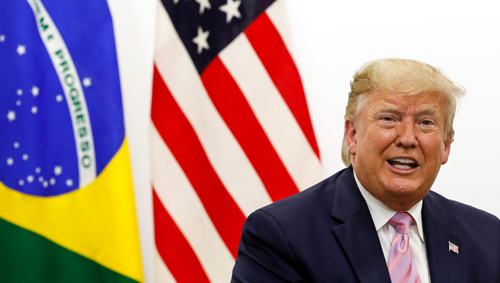Originally published in Jornal da Unicamp. Click here to access the original version (in portuguese).
In the early months of 2025, the newly inaugurated U.S. government has been adopting a series of measures directed—literally, via letters—to universities of all sizes and reputations.
The main issue presented so far is the demand that universities adopt controls over the profiles and activities of faculty, researchers, and students. The two main points raised in the letters sent by the government to universities are the monitoring of expressions identified as antisemitic and of scientific research and administrative and managerial practices related to diversity, equity, and inclusion (DEI).
In other words, the government sees pro-Palestinian expressions and “woke ideology” as distorting the role of universities and threatening American values, allegedly by subordinating merit to social and cultural issues.
According to letters that have come to light (some of which can be seen [here]), universities are accused of failing to curb antisemitic expressions and misusing federal public funds on DEI-related research and administrative measures, as well as on woke ideology (a term that has existed for quite some time, but has recently gained traction and expanded in meaning to include almost everything related to the defense of excluded and marginalized groups, typically associated with leftist movements).
University responses to these letters have varied in content. Some institutions have conceded to the demands in exchange for continued federal funding; others—Harvard being a prominent example—have contested and rejected the government’s requests.
A manifesto dated April 22, 2025, signed by over 340 presidents, vice-chancellors, and other university administrators, rejects interference in university governance but appeals for negotiation. One excerpt captures, in my view, the spirit of the manifesto:
“We are open to constructive reforms and do not oppose legitimate governmental oversight. However, we must oppose undue government intrusion into the lives of those who study, live, and work on our campuses. We will always strive for effective and fair financial practices, but we reject the coercive use of public funding for research.”
It’s unclear what is meant by “legitimate governmental oversight.” The final part of the manifesto offers a clue:
“On behalf of our current and future students, and all who work in and benefit from our institutions, we call for constructive engagement that strengthens our universities and serves our republic.”
The signatories raise both a red and a yellow flag. The yellow could also be interpreted as white. The government has gone on the offensive against universities, and they have begun to push back—though also signaling a willingness to negotiate.
We do not know—no one can say—what the outcome of this change in governmental posture toward universities will be. It may have a major impact, or it may not. But I believe some changes are bound to occur. Judging by the daily and abundant news on this matter, the underlying issue appears to be a sense of unease among parts of the American population and their political representatives regarding universities—and what they stand for. Admiration and rejection are drifting apart and, at best, beginning to carry equal weight.
What concerns us most here is how this will unfold and what effects this policy of advancing over administrative and academic autonomy (which is, ultimately, what this is about) will have on Brazil.
Brazilian universities have also been the target of distrust and discredit from a significant portion of the population. There are websites, blogs, and social media groups dedicated to disparaging universities, especially public ones.
It’s true they were more exposed a few years ago than they are today, particularly during the periods immediately before and after the pandemic. The federal government during that time also encroached on the autonomy of public universities, using budgetary tightening as its “argument.”
Similar examples can be found in various countries. The question remains: are we entering a “flood” of new cultural and economic conservatism that envisions a different future for universities?
A simple foresight exercise imagining what might happen in the near future (five years), aided instantly by an AI tool, helps us reflect on what may occur in the U.S. and its potential ripple effects here. In this basic exercise, I used only three critical uncertainties[1]: autonomy (political and academic); funding; and social impact.
Three scenarios were proposed by the tool and revised by me (scenario titles are my own):
Scenario “Peer Review”: Strengthening of autonomy, funding, and credibility.
In this highly optimistic scenario, U.S. research universities experience a renewal of public support and trust by 2030. Key factors include a favorable political climate that protects academic freedom, renewed investment in higher education by federal and state governments, and universities’ demonstrable success in addressing social challenges. The result is a “virtuous cycle” of strong autonomy, robust funding, and increased social impact. Consequently, the current flood recedes, weakening similar movements in other countries, including Brazil.
For this to happen, a radical change in current policy is required. It’s not impossible! It will depend on the paths that lie ahead. An organized response by universities, supported by intellectual, economic, and technological elites, could halt the current movement. Low probability, I know—but scenarios are based on possibilities, not probabilities.
Scenario “Unpeer Reviewed”: A pessimistic scenario where growing political interference and financial pressures undermine the traditional model of U.S. research universities.
By 2030, universities face tight external controls and severe resource constraints, often addressed through corporate contracts in specific sectors. All three uncertainties have negative outcomes: institutional autonomy is eroded, funding drops drastically, and public trust becomes irrelevant. A new environment emerges in which education and research are reorganized around immediate goals rather than the production and dissemination of knowledge.
The impacts here and in other countries would likely be significant, reinforcing the conservative flood and drastically altering the course of events. This will depend heavily on the political context ahead—something no one can predict today.
If someone were to assign a probability to this scenario—which, it’s worth repeating, should not be done in this type of foresight methodology—it might be low, but not as low as in the first scenario, since the initial steps in this direction are already being taken. Given its possibility and potential impact, it deserves our attention.
Scenario “Peers and Unpeers”: In this middle-ground scenario, research universities navigate uncertainty by enhancing adaptive capacity—especially regarding autonomy, funding sources, and societal engagement.
The scenario up to 2030 is mixed: political pressures persist, but universities learn to manage them; public funding remains limited, prompting the search for new revenue sources; and institutions must work diligently to demonstrate their social value. The result is a reshaped higher education sector, more market-oriented, responsive to local and regional demands, and engaged with diverse societal sectors—sacrificing some traditional autonomy but maintaining relevance through pragmatic commitments and innovation.
The implications for countries like ours, with a tradition of research universities modeled on the (now global) Western framework of knowledge production and use, would also be significant, involving costs to the current model and the need to develop a revised vision of autonomy, funding, and impact.
From the inadvisable—but inevitable—probability-based reasoning we tend to employ, this scenario appears, on a subjective basis, to be the most likely. It would imply changes in governance structures—a general term encompassing virtually all critical aspects of organizational, managerial, and even institutional models.
As history teaches, scenarios are exercises that help broaden our view of future possibilities. They are not categorical. The future will most likely (and here probabilities are allowed, since nothing essential is being excluded) be a combination of elements from all three scenarios.
If that is true, we have a small and incomplete starting point to begin rethinking what we must do to—echoing the signatories of the collective university manifesto—foster a “constructive engagement that strengthens our universities and serves our republic.”
This discussion needs to be brought into Brazilian universities. It has often been overshadowed by corporatist and short-term agendas that, although urgent, end up pushing aside what should be our top priority.
How about institutionalizing strategic and ongoing discussions of this nature within the main governance bodies of our university system?
This text does not necessarily reflect the opinion of Unicamp.
[1] Critical uncertainties in scenario planning are variables whose future behavior can significantly change the course of events.


